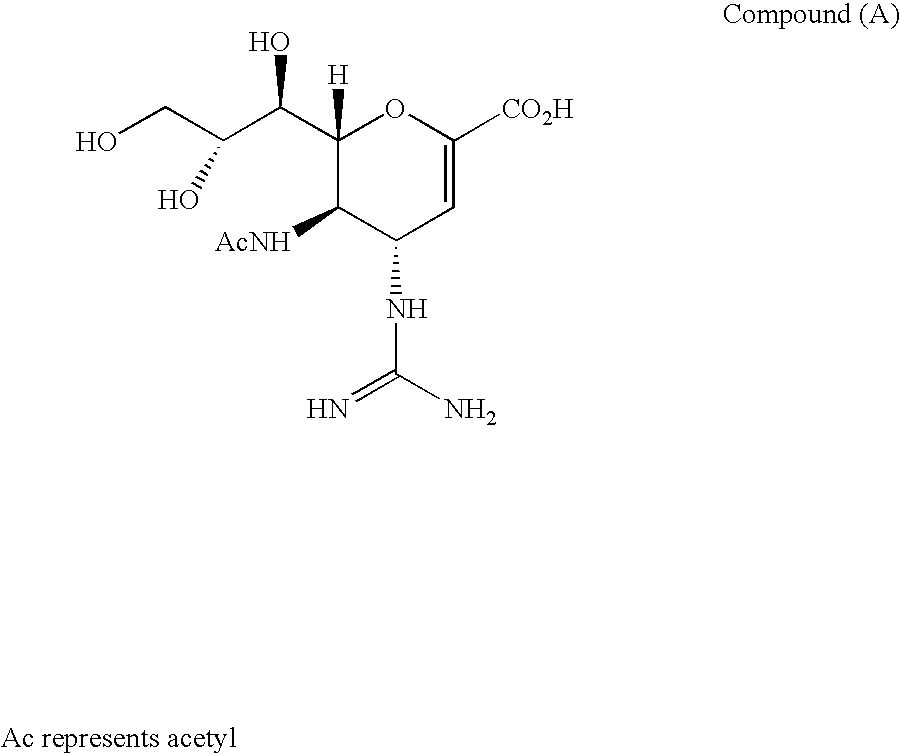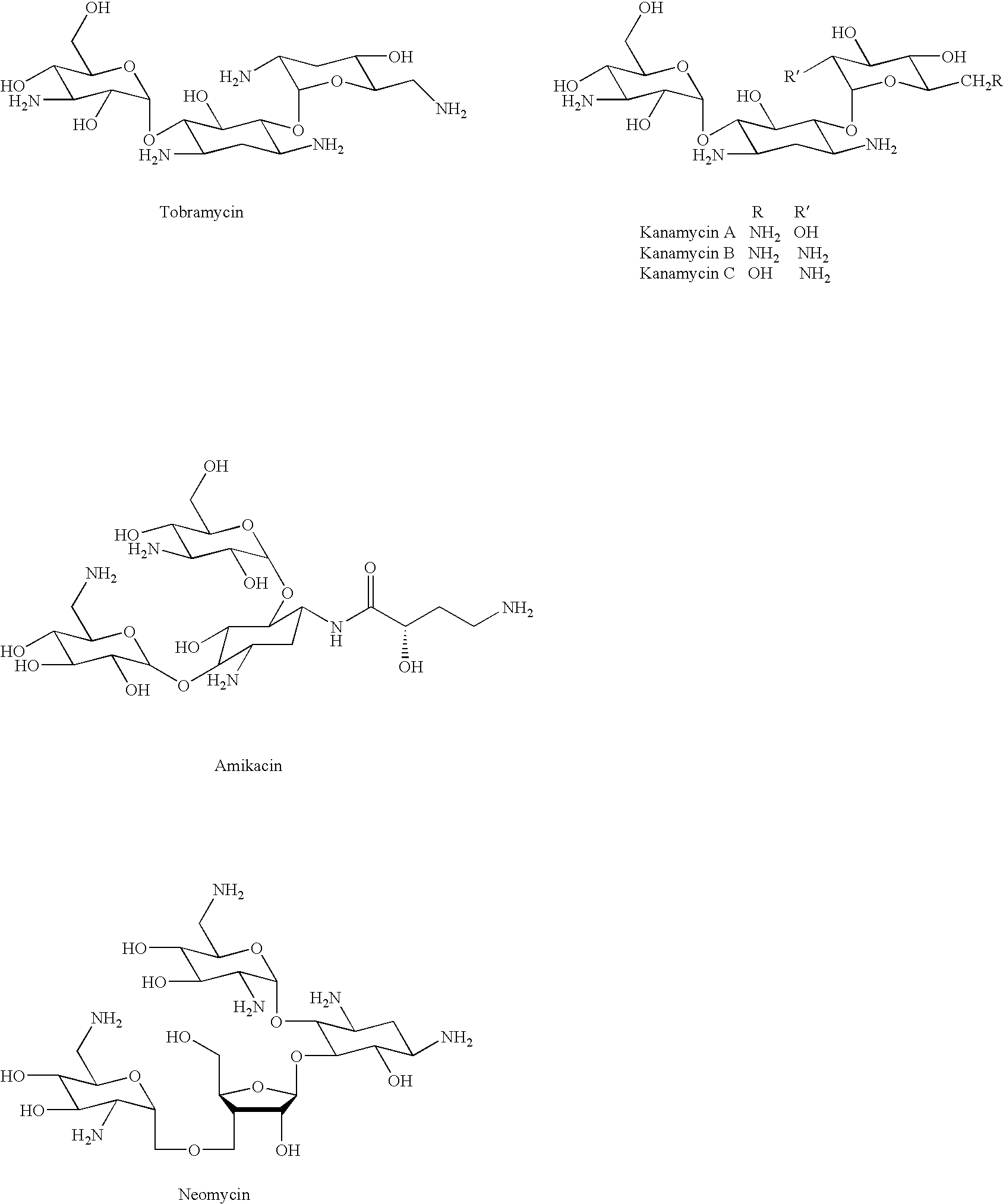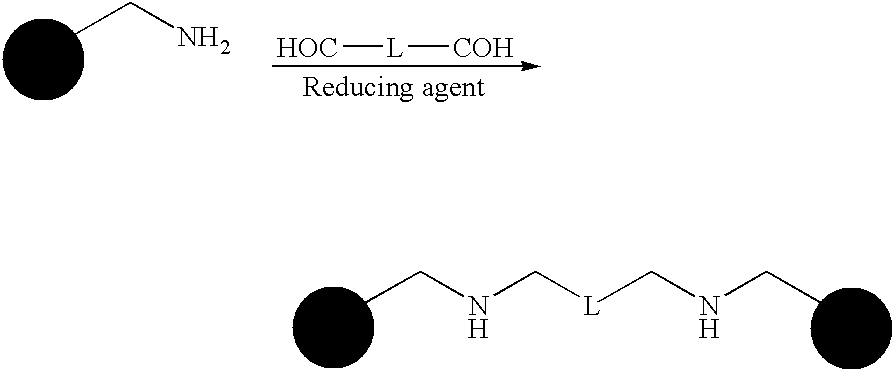Dimeric pharmaceutical compounds and their use
a technology of dimeric pharmaceutical compounds and dimeric peptides, which is applied in the direction of sugar derivatives, pharmaceutical non-active ingredients, saccharide peptide ingredients, etc., can solve the problems of only optimizing compounds, and achieve the effects of preventing microbial infection, inhibiting microbial infection, and preventing its developmen
- Summary
- Abstract
- Description
- Claims
- Application Information
AI Technical Summary
Benefits of technology
Problems solved by technology
Method used
Image
Examples
examples 1 to 8
Machine Methods
Method A (LC / MS)
[0171] Micromass Platform II mass spectrometer operating in positive ion electrospray mode, mass range 100-1000 amu. [0172] Column: 3.3 cm×4.6 mm ID, 3 μm ABZ+PLUS [0173] Flow Rate: 3 ml / min [0174] Injection Volume: 5 μl [0175] Solvent A: 95% acetonitrile+0.05% formic acid [0176] Solvent B: 0.1% formic acid+10 mMolar ammonium acetate [0177] Gradient: 0-100% A / 5 min, 100-0% B / 5 min
Method B
[0178] The prep column used was a Supelcosil ABZ plus (10 cm×2.12 cm). [0179] UV wavelength: 230 nm [0180] Flow: 4 ml / min [0181] Solvent A: acetonitrile+0.05% TFA [0182] Solvent B: water+0.1% TFA [0183] Gradient: 20-40% A / 20 min, 40% A / 20 min, 40-100% A / 0.3 min, 100% A / 15 min, 100-20% A / 3 min
Abbreviations
[0184] TFA trifluoroacetic acid
[0185] DMAP 4-dimethylaminopyridine
[0186] SPE solid phase extraction
Preparation of Intermediate 1
[0187] Benzhydryl (2R,3R,4S)-3-(acetylamino)-4-({(E)-[(tert-butoxycarbonyl)amino][(tert-butoxycarbonyl)imino]methyl}amino)-2-...
example 4
n=13
(2R,3R,4S)-3-(acetylamino)-2-{(1R,21R,22R)-21-((2R,3R,4S)-3-(acetylamino)-4-{[amino(imino)methyl]amino}-6-carboxy-3,4-dihydro-2H-pyran-2-yl)-1-[(1R)-1,2-dihydroxyethyl]-22,23-dihydroxy-3,19-dioxo-2,20-dioxa-4,18-diazatricos-1-yl}-4-{[amino(imino)methyl]amino}-3,4-dihydro-2H-pyran-6-carboxylic acid bis(trifluoroacetic acid salt)
[0193]
[0194] Intermediate 15 (92 mg; 0.076 mmole) was dissolved in a mixture of water (16ml) and methanol (16 ml). To this was added triethylamine (4 ml) and the solution was stirred for 1 hour. Volatile organics were removed in vacuo and the residue adjusted to pH 2 with TFA. Reverse phase preparative HPLC (method B) gave example 4 as the di-TFA salt (35.5 mg; 40% yield). LC / MS (method A) showed (M+2H+) / 2=466; TRET=2.45 min.
[0195] Elemental analysis: Found: C, 42.00; H, 5.79; N, 11.00%. Calc for tetrahydrate: C, 41.95; H, 6.18; N, 11.38%. NMR (D2O)δ: 5.85 (2H, d, 2×CH); 4.85 (2H, dd, 2×CH); 4.46 (2H, dd, 2×CH); 4.34 (2H, dd, 2×CH); 4.05, 2H, t, 2×CH); ...
example 4a
Large Scale Preparation of Example 4
[0196] Intermediate 15 (2.8 g; 2.3 mmoles) was dissolved in water (50.4 ml). To this was added methanol (50.4 ml) followed by triethylamine (6.4 ml; 46 mmoles). The resulting solution was stirred at room temperature for 5 hours, the volume of the reaction mixture was reduced by ca 33% in vacuo at 35 degrees C. then the pH was adjusted to 2 with TFA (0.5 ml). The acidified solution was then injected onto a Prochom LC50 HPLC system comprising of a 20 cm×5 cm column packed with 7 micron Kromasil C8 packing material. The column was subjected to gradient elution: [0197] Solvent A: water+1% TFA [0198] Solvent B: 75% acetonitrile / water+1% TFA [0199] Flow: 80 ml / min [0200] Gradient: 0% B to 100% B / 40 min
[0201] The appropriate fractions were combined and the acetonitrile was removed in vacuo at 35 degrees C. The aqueous residue was absorbed onto a 10 cm×22 mm column of Amberchrom CG-161 (PSDVB resin) and the column was washed with water then eluted with ...
PUM
| Property | Measurement | Unit |
|---|---|---|
| Mass | aaaaa | aaaaa |
| Mass | aaaaa | aaaaa |
| Mass | aaaaa | aaaaa |
Abstract
Description
Claims
Application Information
 Login to View More
Login to View More - R&D
- Intellectual Property
- Life Sciences
- Materials
- Tech Scout
- Unparalleled Data Quality
- Higher Quality Content
- 60% Fewer Hallucinations
Browse by: Latest US Patents, China's latest patents, Technical Efficacy Thesaurus, Application Domain, Technology Topic, Popular Technical Reports.
© 2025 PatSnap. All rights reserved.Legal|Privacy policy|Modern Slavery Act Transparency Statement|Sitemap|About US| Contact US: help@patsnap.com



